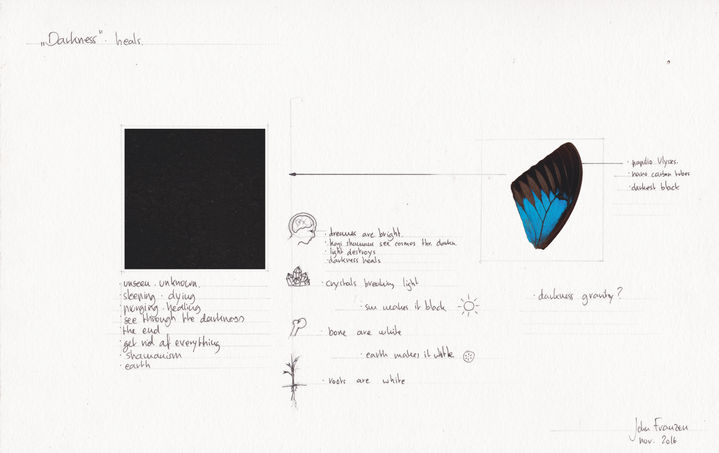COSMOLOGY

John Franzen proposes an artistic investigation of creation
“As an artist I am naturally devoted to the subject of creation. Since I myself was once created, and I am merely an assemblage of nothingness, it is my inevitable responsibility to create and to build from blankness. In the process of creating, I tend to first reduce everything to nothing. Next, I approach the universe around me, and all that is constructed within it: physics, maths, biology, philosophy, anthropology, art, spirituality and mystics. Taken from this original point of view, I work from within the womb of the universe. ‘Created’ and ‘destroyed’ are altered states of the same matter; the first implies the other, and vice versa. They are variations of a theme, and are bound to exist together forever.”
Franzen investigates the origin of art by reducing all to the most basic components, energies and principles of existence. His reductionist and puristic approach, his very own vision of science and his personal experiences result in a combination of spirituality, mysticism, and creativity. Franzen believes that creation and destruction are complementary and interconnected acts, with one resulting from the other. The urge to create and destroy is, therefore, understood as a substantial human need, and it is representative in all of his artistic experimentations.
The performative aspect in his work is of great importance. It becomes a ritual bridging the creator and observer, life and death, beginning and end, god and humans, existence and non-existence - connecting them and thus unifying them with the cosmos. Franzen’s Cosmology is a model consisting of a series of artworks, each of them being a natural progression from the previous stage. These can be summarized as the following.
PRISTINE is the experimentation of the “mother of all images”. Aiming to understand the significance of the prenatal space, which is beyond the time, when nothing has been born yet. The visual symbolizes the beginning, purity, nothingness as well as infinite possibility.
SINGULARITY FLUX investigates how the void of the canvas is disrupted by the first brush stroke, and such must be considered the ‘first creational act’. It is the incarnation of energy, which has one meaning; the sheer strive for existence. The abrupt outburst of energy is an act of creation, while simultaneously, it is an act of destruction of the immaculate empty canvas.
ONE LINE is, as it semantically says, the investigation of a unique presence of creation onto the nothingness. If everything begins with white, the next step in the universe of creation is the unique stroke, the irreversible act that will mark the initial void, destroying its pureness in the process.
EACH LINE ONE BREATH the linear structure is based upon the human-line algorithm. The works induce both mechanical and organic connotations: the quasi-automatic pattern, wherein each line is a reaction of the previous one, is dictated by the breathing rate of Franzen. The irregularities within the structure result from the externalization of artist’s thoughts, emotions and reflections.
DRAWN BY BLOOD goes a step further in both the limits of the performative act and of the ritualistic form of creation. Franzen’s fascination with the spiritual nature of blood, and its use for shamanic and religious practices are of great importance for this work. The creational process attains the status of a ritual in veneration of life-forces, in which the drawing is reduced to lines, the creator to his breath and ink to his own blood.
DARKNESS a monochromatic black canvas , as the antithesis of PRISTINE, represents the painting full to the bursting point, on the verge of explosion. The cleansing ritual that comes with the act of burning the piece represents a reunification of the end and the beginning- new possibilities arise once more.
THE INABILITY TO OVERCOME THE NARCISSISTIC UNIVERSE refers back to the idea that every form of creation has a destructive aspect in it. Franzen argues that the universe has a narcissistic nature. A mirror can serve to show the true essence of such characterization of a dualistic universe, since it is tinted in golden colour. Whereas the ancients venerated icons and Gods, Franzen venerates the destruction of the reflection of the narcissistic nature of the observer, the art piece and the artist.
SOMEONE DIED is the capturing and externalization of beauty, death and nature. Nature can only be kept alive if it is to be left free. It can only be the natural way of the existence of true beauty. Yet, throughout history, humans have been trying to analyse nature, to replicate its beauty, by destroying it. In this line of thought, a true analysis of science can only conclude that death is necessary to achieve immortality.










